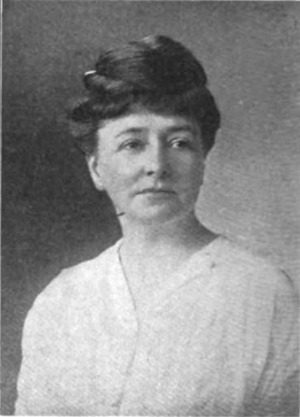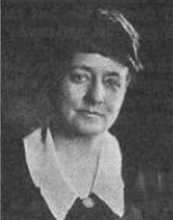Maud Wood Park facts for kids
Maud Wood Park (born January 25, 1871, died May 8, 1955) was an important American woman. She worked hard to get women the right to vote. People who fight for women's right to vote are called suffragists. Maud also worked for women's rights in other ways.
Contents
Maud Wood Park: A Champion for Women
Maud Wood Park was born in Boston, Massachusetts. She went to St. Agnes School in Albany, New York, and finished in 1887. After school, she taught for eight years. Then, she went to Radcliffe College.
Early Life and Education
At Radcliffe College, Maud was one of only two students who believed women should vote. She graduated in 1898. While at college, she met Charles Edward Park, and they got married. Later, she married Robert Hunter Freeman.
In 1900, Maud went to a big meeting for women's right to vote. It was called the National American Woman Suffrage Association convention. She was the youngest person there at 29 years old.
Fighting for the Right to Vote
Maud wanted to get more young women involved in the movement. So, she and her friend Inez Haynes Gillmore started the College Equal Suffrage League. Maud traveled to many colleges to promote it. She helped start chapters in thirty states. In 1908, she also helped create the National College Equal Suffrage League.
Maud was friends with another suffragist, Carrie Chapman Catt. Carrie asked Maud to work in Washington, D.C. Their goal was to get the Nineteenth Amendment passed. This amendment would give American women the right to vote.
In 1901, Maud helped start the Boston Equal Suffrage Association for Good Government (BESAGG). This group later became the League of Women Voters of Boston. This happened after women won the right to vote in 1920. Maud was the leader of BESAGG for twelve years.
Leading Other Groups
After women got the right to vote, Maud became the first president of the League of Women Voters in 1920. She held this job until 1924. She traveled across the United States. She gave speeches and helped new members join. She also helped plan what laws the League would support.
Maud said the League of Women Voters wanted to be a group where people with different political ideas could work together. They wanted to make steady progress, even if it was slow. Their goal was to help many women move forward a little at a time.
Maud also started a group called the Women's Joint Congressional Committee in 1924. She was its chairwoman. This group helped pass important laws. These included the Sheppard–Towner Act of 1921 and the Cable Act of 1922. Both laws helped advance women's rights.
Maud was known for her "front door lobby" approach. This meant directly talking to lawmakers. It showed the hopeful spirit of the women's suffrage movement. She also helped write a book called Front Door Lobby. It was about how women won the right to vote in the United States. She also wrote a play called Lucy Stone.
Her Work for the Nineteenth Amendment
From 1917 to 1919, Maud led the effort to get Congress to approve the women's right to vote amendment. She trained volunteers who came to Washington, D.C. These volunteers talked to their representatives in Congress. Maud also kept detailed notes about members of Congress. This helped her plan the best ways to get the amendment passed.
During World War I, Congress was mostly focused on war issues. But Maud used her connections to get a special committee formed for women's right to vote. This committee approved the amendment. The House of Representatives approved it in 1918. The Senate approved it in 1919. Then, it was sent to the states to be approved by them. In 1920, the Nineteenth Amendment was finally approved. This was a huge victory for women's rights.
Later Life and Legacy
Maud Wood Park started the Schlesinger Library on August 26, 1943. She gave her collection of books, papers, and items about women reformers to Radcliffe. This collection grew into a research library. It was first called the "Women's Archives." In 1965, it was renamed the Schlesinger Library. It was named after Elizabeth Bancroft Schlesinger and Arthur M. Schlesinger. They strongly supported the library's mission.
Maud Wood Park died in 1955 in Massachusetts. Her work helped change the lives of women in America forever.
Images for kids







